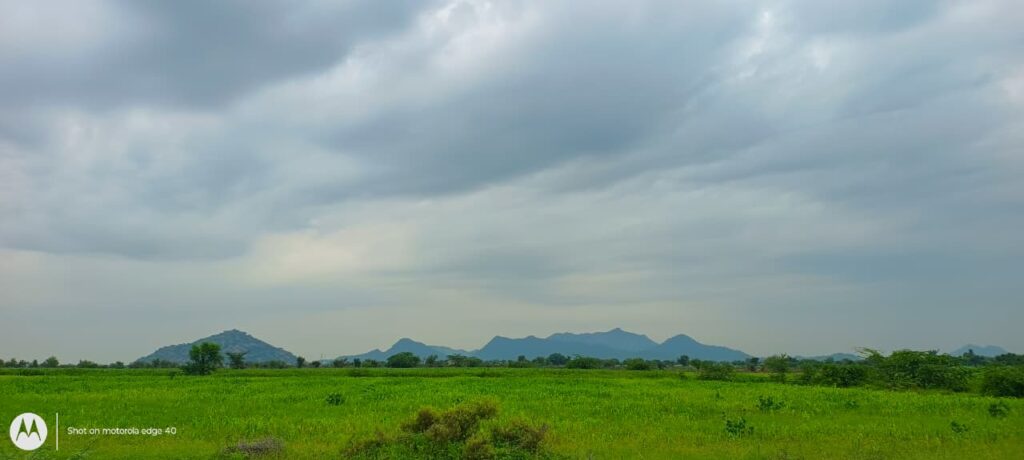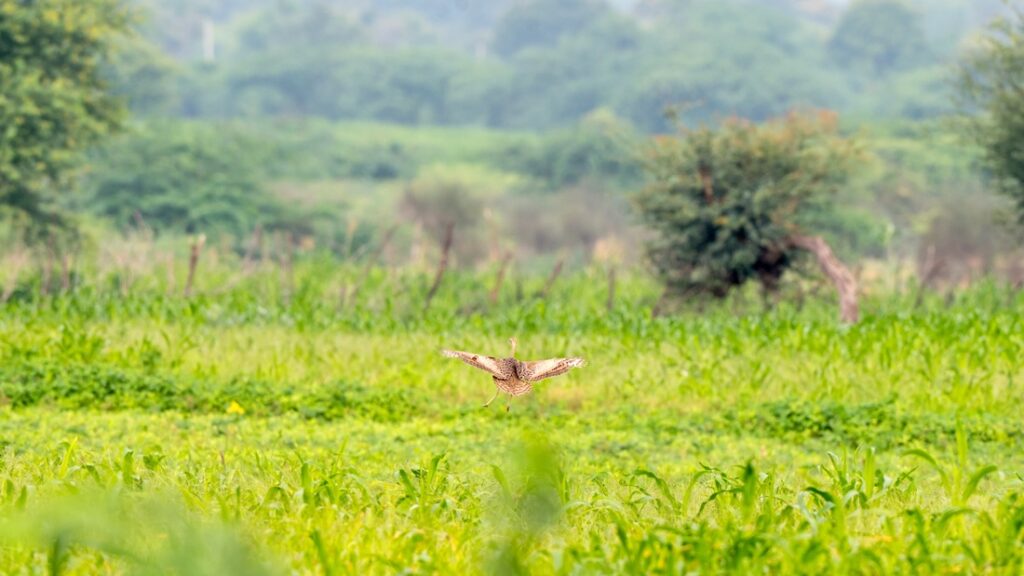The morning of 9th August was more than just another day—it was the start of my first real field survey as an intern with BNHS for the Bustard and Florican Conservation Program. Under the leadership of Rushikesh Pawar Sir of BNHS, I set off from our base camp at 6:30 AM, along with three other interns, in a trusty white Bolero.
The drive from base camp towards the field site was a treat in itself. The road passed through stunning wetlands shimmering under a cloudy sky, alive with bird calls and the occasional flutter of wings. Every glance outside the window revealed something new—herons wading gracefully, ducks cutting ripples through still waters, and the calm beauty of monsoon-fed landscapes.
We reached the field site around 6:45 AM, parking near an expanse of cropland. The walk toward the regular Lesser Florican lekking site took us through flat, lush fields of Sorghum, urad, and til. Inland birdlife kept us company—Large Grey Babbler, Great Grey Shrike, Zitting Cisticola, and Painted Francolin all made their appearances.

Our observation point was a large rock, a perfect natural watchtower. With binoculars in hand and the guidance of Rushikesh sir, we scanned the fields with anticipation. This site was known to be the breeding territory of a single male Lesser Florican, and my heart raced at the thought of finally seeing one perform its legendary courtship display.
But minutes stretched into an hour, and no familiar black-and-white figure leaped above the grass. We waited, scanning, hoping. Still nothing.
Then, Rushikesh sir made the call—we would split into two teams to cover more ground. I teamed up with him, and we headed toward Dhantol, another nearby site, one that had seen male courtship activity in previous years. Hope returned.
After about ten minutes, we arrived and began scanning again. The fields were quiet—no sudden leaps, no aerial displays. A faint sense of disappointment started to creep in.
That’s when it happened.
From about 20 meters ahead, a bird suddenly burst into flight with a loud, rapid wingbeat. It was francolin-sized, and my eyes couldn’t quite place it. Rushikesh sir smiled and said the words I had been waiting for: “That’s a female Lesser Florican.”
She flew low over the ground, covering about 50–70 meters before settling gracefully in a nearby Sorghum field. My heart swelled—not only had I finally seen a florican, but I had seen it in the wild, right in its natural habitat. True, it wasn’t the male, and I missed witnessing the elaborate courtship display, but the sight of the female’s elegance was enough to fill me with joy.

Rushikesh sir even managed to get a few shots of her in flight. As we discussed her behaviour and conservation challenges, I began to realize something deeper—these moments aren’t just about ticking a species off your checklist. They’re about understanding why these birds matter, and why protecting them is as urgent as it is essential.
I left the site that day without seeing the male Lesser Florican leap into the sky, but I carried home something far more valuable—a connection with the landscape and its inhabitants, and a renewed commitment to work for their survival. Because sometimes, conservation starts not with what you see, but with what you feel.
Note: Feature image of flying female lesser florican is by Surendra Chauhan.
For futher reading about lesser floricans, click below:
Lesser Floricans, The Vanishing Birds Of The Disappearing Grasslands


That’s a beautiful narrative. Could truly connect with the excitement and enthusiasm of the author. Would love to see one Lesser Florican some day.
Helpful, much appreciated.